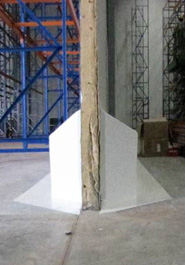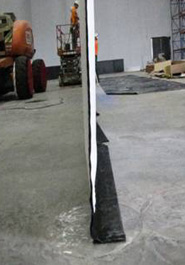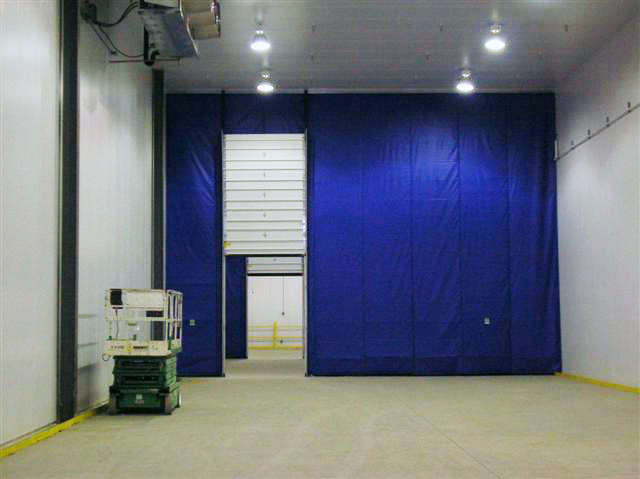- Home
- News
- 4 Key Reasons Insulated Curtain Walls Beat Insulated Metal Panel Walls
4 Key Reasons Insulated Curtain Walls Beat Insulated Metal Panel Walls
What makes insulated curtain walls a smarter, more affordable solution for dividing a cooler or freezer than insulated metal panel (IMP) walls? To answer this question, we need to look at four important considerations for dividing a cooler or freezer: floor space, insulating ability, installation, and cost.
Floor Space
The value of floor space in a freezer is high. In the event additional walls are needed to create a discreet temperature zone, the traditional approach has been an IMP wall. While effective in closing off the space, these rigid walls are designed to support themselves from the bottom. This requires some type of base or foundation to hold them in place - typically a concrete curb poured the length of the wall, with a cast in which to set the rigid panels. This curb is typically from 18" to 24" wide at the base. Over a run of several hundred feet of wall, the floor space this curb occupies is significant and permanently cannot be used for storage or forklift traffic.


An insulated curtain wall, on the other hand, is only 1.5" thick, and is supported from the building roof structure (it also weighs much less than an IMP wall). There is no need for a foundation curb, the result being an effective insulating wall using only about 5% of the space required to add a rigid IMP wall. Additionally, IMP walls over a certain height require vertical steel columns be installed at intervals to keep the IMP walls from bowing. Insulated curtain walls, again being lighter and hung from the roof, do not need these added reinforcements.
Insulating Ability
Insulated curtain walls offer more than adequate insulating value for most freezer applications, with R-values ranging from 6.0 for a single thickness curtain to as high as 10.0 for a double wall curtain, still without the need for floor gobbling curbing or costly vertical columns.

Installation
Installation of curtain walls can be accomplished with much less disruption of the freezer space than with a rigid wall. Typically what is required for insulated curtain walls is to move racking only enough to allow passage of a scissors lift. In many cases, racking will not have to be removed at all. The existing flue space between racks may be wide enough to allow curtain rolls to be dropped down from the top of the rack (assuming it reaches to near the roof deck).
Cost
Insulated curtain walls are very competitive cost wise with IMP walls even before you factor in the installation and floor space savings. The design and manufacturing of the curtains ensures this. The curtains are designed to be easily trimmed in the field around penetrations such as pipes, conduit, etc. Special material panels can be inset in the curtain if needed to provide protection near heat sources, lights, etc. Modular curtain panels are also manufactured to include any roof slope considerations present, and can be split into a main curtain and an upper valence curtain, if desired, for areas above the bottom of bar joists (again for easier, faster installation). Try doing any of these things with an IMP panel.
Blog Post Take-away: In each of the four important consideration for dividing a cooler or freezer, insulated curtain walls beat or match the performance of insulated metal panel walls.
Back to News